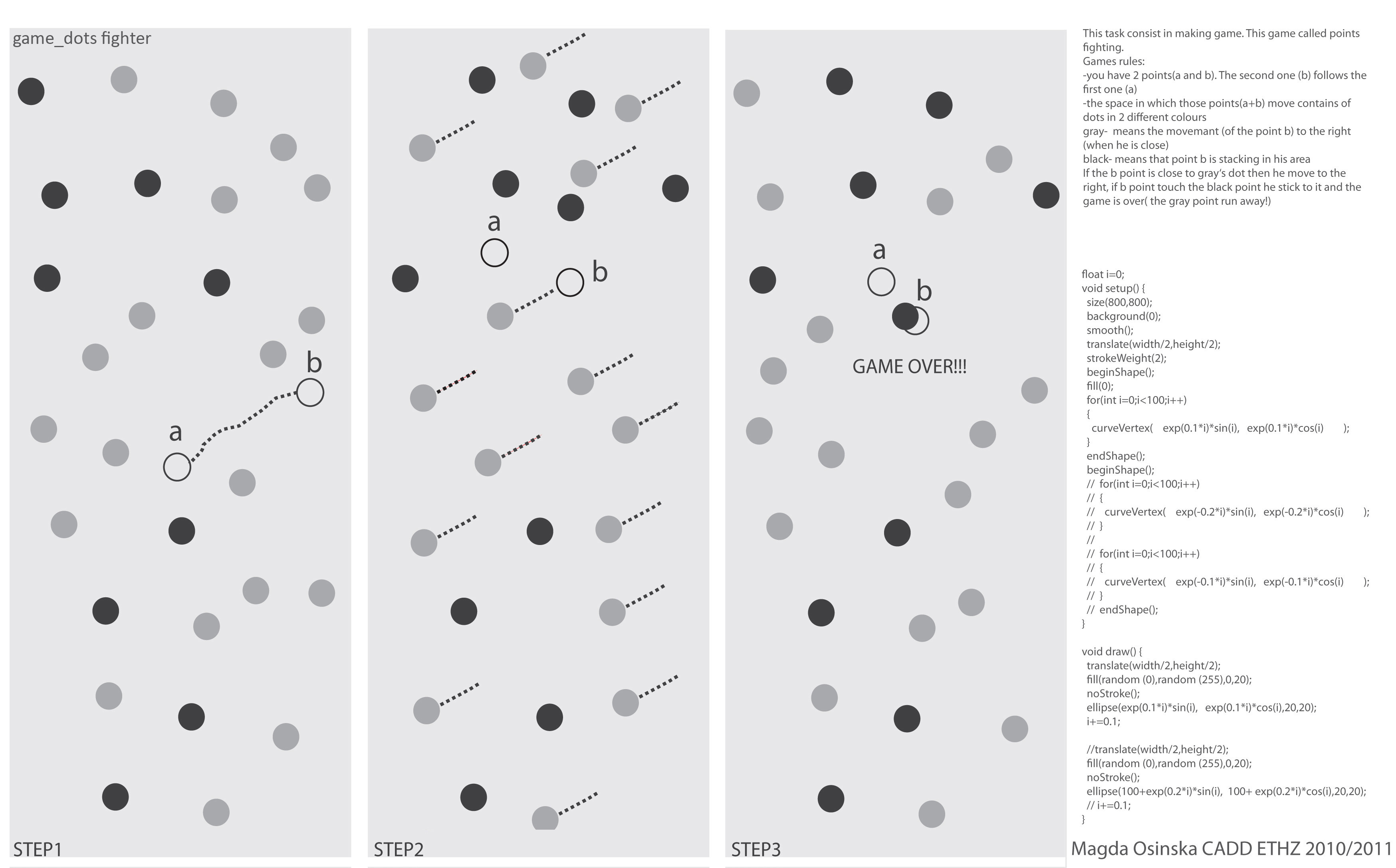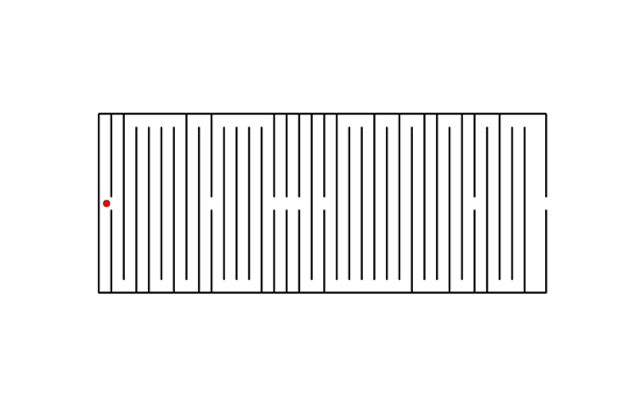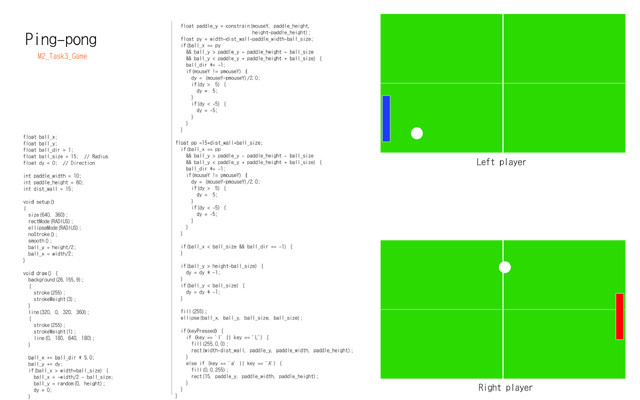M2:Student works/Review of 3rd Assignment-Game
On the third day we stepped into the world of games. The task was to analyze a game (code) found on web and to create either a modification of it or a completely new game. Logicals, Events, simple Dynamics and two basic ways of introducing input data to games: Keyboard Event and Mouse Event were introduced.  Enjoy!
STUDENT WORKS
Agata Muszynska
Hideaki Takenaga
Jesper Thøger Christensen
As an assignment to design a game from scratch in one day I were inspired by the classic arcade game named Breakout.Breakout was one of the first truly, endlessly, maddeningly addictive games ever invented. A variation of Pong, but instead of the ball bouncing between little rectangular paddles of you and your opponent, in Breakout you were fighting against a bunch of rectangular blocks. The ball bounced off your paddle on the bottom of the screen, smashed blocks, which were in rows at the top of the screen, and bounced back down to your awaiting paddle.
http://openprocessing.org/visuals/?visualID=15852
Nikola Marincic
Very primitive “Shoot ‘Em Up” game written after two weeks of learning Processing with Hua Hao. Inspired by the classic Arcade machines and Amiga 500 games like Operation Wolf, Cabal, P.O.W. etc.
Magda Osinska
This task consist in making game. This game called points fighting.
games rules:
You have 2 points(„a“ and „b“). The second one (b) follows the first one (a). The space in which those points(„a+b“) move contains the dots in 2 different colours: red- means the movemant (of the point b) to the right side when he is close to red dots. black- means that point b is stacking when he touche black dots. If point b touch the black point he stick and game is over! If not he is follow the point „a“, which trys to run away!
http://www.openprocessing.org/visuals/?visualID=17218







